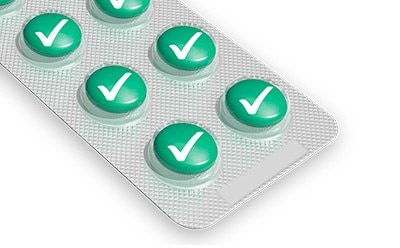Compendial Testing & Regulatory Guidance

Drug sponsors and applicants are required to propose specifications (i.e., attributes, analytical procedures, and acceptance criteria) for the excipients, drug substances and drug products in their applications.
These specifications should adhere to the quality standards in the United States Pharmacopoeia/National Formulary (USP/NF), the British Pharmacopoeia (BP), the European Pharmacopoeia (EP), or the Japanese Pharmacopoeia (JP).
Compendial pharmacopoeia tests are standardized protocols for many pharmaceutical raw materials and finished products. Testing and compliance to these standards detailed within compendial methods is a basic requirement for global manufacturing, release and distribution of pharmaceutical ingredients and drug products.
Speak to an expert today and get further support on compendial testing and complying to regulatory requirements.
Related Technical Articles
- Compendial methods from the USP (United States Pharmacopeia) are widely used in pharmaceutical drug product and raw materials testing. However, not all methods in the USP use modern technologies. In chromatographic methods, it is not uncommon that older brands of columns are specified. Therefore, the USP methods are under continuous revision to improve existing procedures or to allow the user to obtain better results.
- The titer determination or standardization of a titration solution is essential for accurate and reliable titration results. High quality solutions verified by high quality standards are the base for a reliable determinations.
- Elemental impurities in drug products pose a risk to patient health due to toxicological effects, and their levels should be controlled within acceptable limits. Find analytical methods and materials for impurity assessment.
- See All (14)
Related Protocols
- This paper illustrates the setting up of a Lopinavir assay following European pharmacopoeia guidelines (10.2), and using a shorter column packed with smaller particles. The described assay saves valuable time and improves separation efficiency, which typically translates to better method performance.
- Aripiprazole is an atypical antipsychotic and a partial dopamine agonist. It is primarily used in the treatment of schizophrenia, bipolar disorder, major depressive disorder, tic disorders, and irritability associated with autism. Aripiprazole was first approved by the U.S. Food and DrugAdministration in November 2002 for schizophrenia and by the European Medicines Agency in June 2004 for acute manic and mixed episodes associated with bipolar disorder.
- Under applied conditions, system suitability criteria are met, and the Chloroquine Phosphate HPLC Assay and Impurity Profiling Methods demonstrate good resolution/selectivity, reproducibility, and sensitivity.
- Folic acid or folate is classified as a B vitamin (B9). Folic acid is synthetically produced, and used in fortified foods and supplements. Folate is converted by humans to dihydrofolate (dihydrofolic acid), tetrahydrofolate (tetrahydrofolic acid), and other derivatives, which have various biological activities.
- Sildenafil, sold under the brand name Viagra, among others, is a medication used to treat erectile dysfunction and pulmonary arterial hypertension.
- Following GB method for Vitamin A and Vitamin E as it is written with a 250 x 4.6 mm Ascentis® Express C30 column gives baseline resolution between the critical pair (gamma-, and beta-tocopherol; peaks 3 and 4).
Find More Articles and Protocols
Related Resources
- Flyer: A Quick Guide to Successful Dissolution Testing
From development to drug release, this interactive PDF outlines a range of reliable, consistent filters and reagents for dissolution testing protocol.
- Poster: HPLC Packings for USP Compendial Methods
HPLC USP columns wallchart
Related Webinars
This presentation gives a high level overview of the specific values of pharmacopeial standards.
Learn strategies to improve productivity and reduce costs in your pharmaceutical analyses with U/HPLC method adaptation.
To continue reading please sign in or create an account.
Don't Have An Account?
